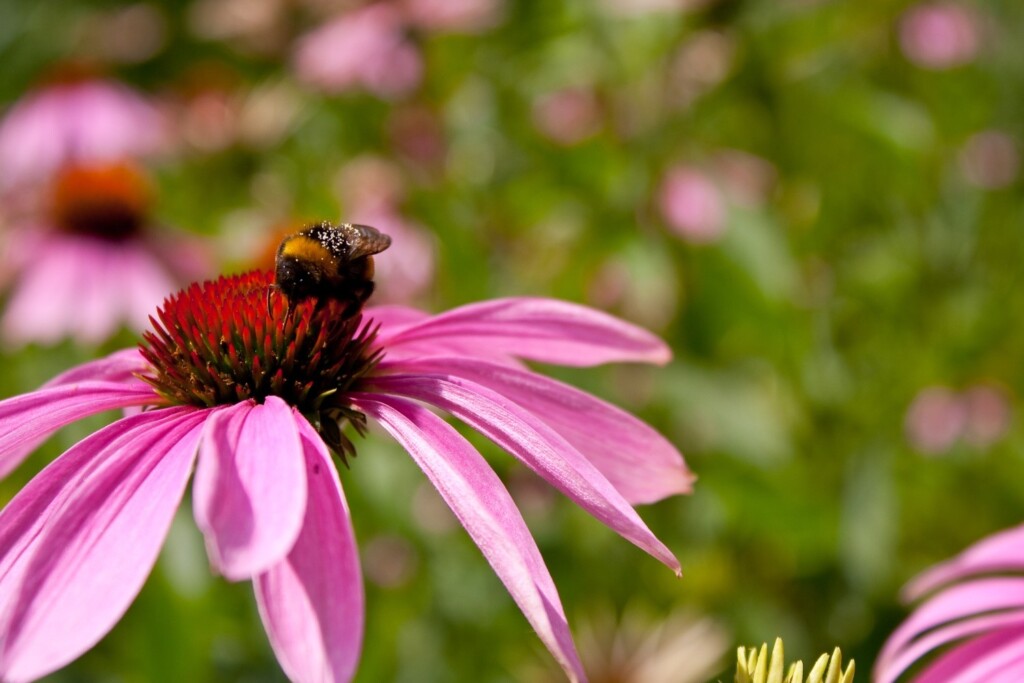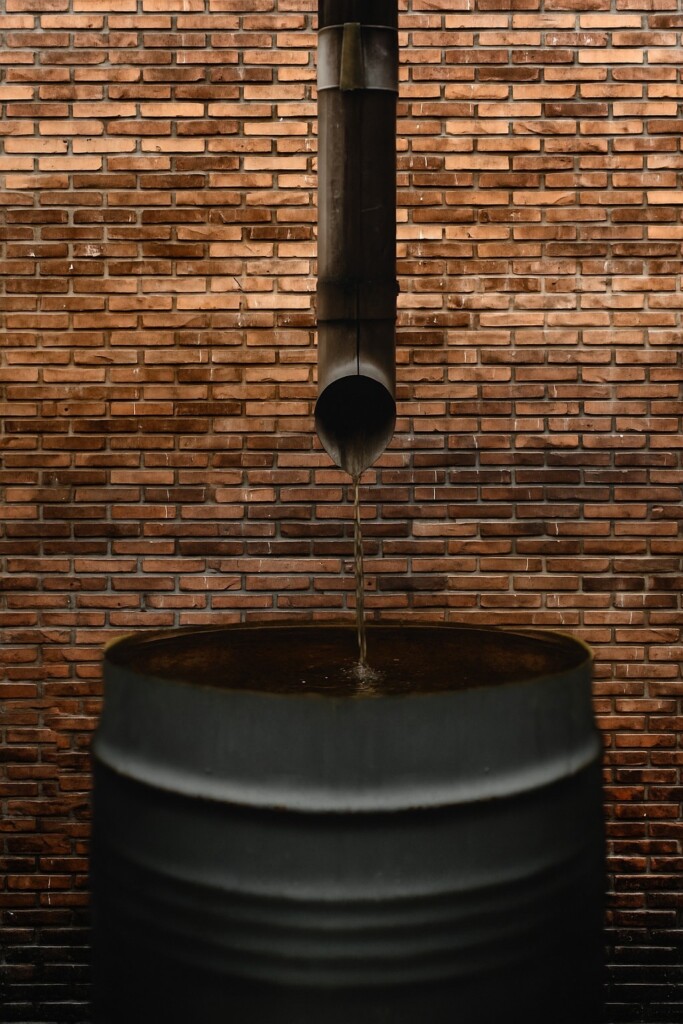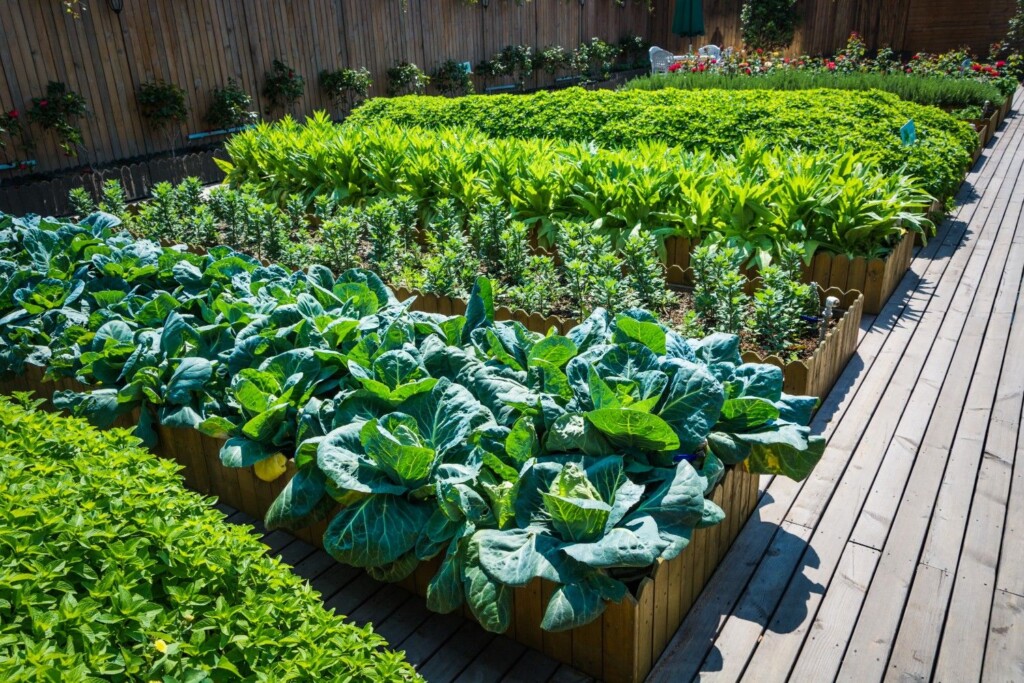When I first looked at my empty backyard, my main concern was the cost. The idea of “eco-friendly” sounded expensive, but I found out that the most impactful changes were surprisingly cheap. In fact, eco friendly landscaping turned out to be the most budget-friendly approach I could have taken.
Working with nature instead of against it has saved me hundreds of dollars on water bills, fertilizers, and constant maintenance. Whether you’re starting from scratch or looking to transform your existing yard, these sustainable garden ideas will help you create a beautiful outdoor space without breaking the bank.
Why “Eco-Friendly” Landscaping is Your Most Budget-Friendly Option
The secret to affordable landscaping isn’t buying cheaper materials—it’s working with what nature provides for free. Eco friendly landscaping focuses on supporting natural processes that reduce your ongoing costs dramatically.
Traditional landscaping fights against local conditions with non-native plants, chemical fertilizers, and constant watering. This approach creates a cycle of expensive maintenance that never ends. Sustainable landscaping, on the other hand, works with your local climate and soil conditions.
When you choose native plants for landscaping, you’re selecting species that naturally thrive in your area without extra water, fertilizer, or pest control. These plants have evolved over thousands of years to handle local weather patterns, soil types, and native insects.
The math is simple: less water usage means lower utility bills, fewer fertilizers means less money spent at the garden center, and choosing the right plants means less time and money on replacement costs.
High-Impact Area #1: Water-Wise Landscaping
Water costs can make up 30% of your summer utility bills, but according to the EPA’s WaterSense program, smart plant choices and simple systems can cut this expense significantly.
Choose Drought-Tolerant Native Plants

Drought-tolerant plants are your best investment for long-term savings. Once established, these plants require minimal watering and virtually no fertilizer.
Start by researching plants native to your specific region through your local university extension office or an online tool like the National Wildlife Federation’s Native Plant Finder.
Popular low-maintenance options:
- Lavender – attracts pollinators and provides fragrance
- Ornamental grasses – add texture and movement
- Sedum varieties – perfect for rock gardens and slopes
- Regional wildflowers – create natural meadow areas
A mistake many people (including me!) make at first is underestimating how much sun a certain spot gets. Before you buy plants, spend a day tracking the light in your yard. It’s a simple step that prevents you from wasting money on plants that won’t thrive.
Group plants with similar water needs together. This technique, called hydrozoning, allows you to water efficiently and avoid overwatering drought-tolerant plants.
Build a DIY Rainwater Harvesting System

A basic rainwater harvesting system DIY setup can be built for under $100 and will provide free water for your garden all season long.
The simplest system involves connecting a food-grade barrel to your downspout with a diverter kit. Add a spigot near the bottom and you have instant access to chlorine-free water that plants prefer.
For larger gardens, consider connecting multiple barrels or using a larger storage container. Position your rain barrels on blocks or a platform to create gravity-fed water pressure. This eliminates the need for expensive pumps while making it easier to fill watering cans.
Always use a tight-fitting lid and add a small amount of vegetable oil to prevent mosquito breeding. Your local hardware store often carries food-grade barrels, or check with restaurants that receive bulk ingredients.
High-Impact Area #2: Free Soil and Materials
Healthy soil is the foundation of any successful garden, but you don’t need to buy expensive amendments when nature provides everything you need.
Start a Compost Pile for Nutrient-Rich Soil

Learning how to start a compost bin was one of the best decisions I made for both my garden and my wallet. Compost transforms kitchen scraps and yard waste into rich, dark soil amendment that would cost $40-60 per cubic yard if purchased.
Start with a simple three-bin system made from pallets or wire fencing. The first bin holds fresh materials, the second contains decomposing compost, and the third stores finished compost ready for use.
Your compost needs four ingredients:
- Green materials (nitrogen): vegetable scraps, coffee grounds, fresh grass clippings
- Brown materials (carbon): dried leaves, paper, cardboard
- Air: turn the pile regularly or add coarse materials like twigs
- Water: keep the pile as moist as a wrung-out sponge
Avoid meat, dairy, and pet waste which can attract pests or create odors. With proper balance, your compost will be ready in 3-6 months and will dramatically improve your soil’s ability to retain water and nutrients.
For a more detailed, scientific breakdown of the composting process, the University of Georgia Extension offers an excellent comprehensive guide.
Find Free Mulch in Your Neighborhood
One of the best free mulch sources I found was from a local tree-trimming service. A quick phone call got me a whole truckload of free wood chips. It took an afternoon of work with a wheelbarrow, but it saved me hundreds of dollars.
Municipal recycling centers often have free or low-cost mulch made from yard waste. Many cities offer free mulch to residents, especially in spring when they’re processing winter’s collected branches and leaves.
Tree care companies are usually happy to dump their wood chips at your location instead of paying disposal fees. Call local companies and ask to be put on their “free mulch” list.
Apply 2-3 inches of mulch around plants, keeping it away from plant stems to prevent rot. Mulch reduces watering needs by up to 50% while suppressing weeds and slowly adding nutrients to the soil as it decomposes.
High-Impact Area #3: Smart Lawn Alternatives
Traditional lawns are expensive water and fertilizer consumers. Reducing lawn area is one of the fastest ways to cut maintenance costs while increasing biodiversity.
Reduce Your Lawn Size with Garden Beds

Converting even 25% of your lawn to garden beds can cut your water usage significantly while creating space for food production or native plants.
Start by identifying areas where grass struggles to grow—under trees, on slopes, or in shaded areas. These spots are perfect for conversion to low-maintenance backyard garden beds.
Use cardboard to smother grass without chemicals. Layer cardboard over the grass, wet it thoroughly, then cover with 4-6 inches of compost or mulch. Within 6 months, you’ll have rich, plantable soil and the grass will be completely decomposed.
Edge your new beds with stones from your property or free materials from construction sites (with permission). This creates clean lines without the ongoing cost of plastic edging that needs replacement.
Plant a Low-Maintenance Clover Lawn

Clover lawns are making a comeback because they’re virtually maintenance-free and stay green during droughts. White clover and microclover varieties create a soft, green surface that requires no fertilizer and minimal watering.
Clover fixes nitrogen from the air, naturally fertilizing itself and surrounding plants. It tolerates foot traffic well and only needs mowing once a month during growing season.
Seed clover in early spring or fall when temperatures are cool. Mix with a small amount of grass seed if you prefer a mixed lawn, or plant pure clover for maximum sustainability.
The initial seeding cost is similar to grass, but ongoing maintenance costs are nearly zero. Clover also provides nectar for bees and other beneficial insects.
5 More Quick-Win Landscaping Ideas
Here are additional cheap landscaping ideas that deliver immediate impact:
• Solar pathway lights – No wiring required, and they charge themselves daily. Look for deals at discount stores or end-of-season sales.
• Cardboard weed suppression – Layer cardboard under mulch to prevent weeds naturally. It’s free from appliance stores and completely biodegradable.
• Simple bee hotel – Drill holes in a wooden block or bundle hollow stems to create nesting sites for beneficial insects.
• Repurposed container gardens – Use old buckets, tires, or wooden crates as planters. Drill drainage holes and you have instant raised beds.
• Seasonal branch arrangements – Collect interesting branches, dried seed pods, or evergreen boughs for free seasonal decorations.
Frequently Asked Questions (FAQ)
How can I make my backyard eco-friendly on a budget?
Start with the biggest impact items first: reduce lawn area, choose native plants, and set up rainwater collection. These changes require minimal upfront investment but provide ongoing savings. Focus on working with your natural conditions rather than fighting them.
What is the cheapest way to landscape a backyard?
Use free materials whenever possible: compost kitchen scraps, collect free mulch from tree services, and propagate plants from cuttings or seeds. Start small with high-impact areas like the view from your main windows, then expand gradually.
How do I start a low-maintenance landscape?
Choose plants native to your region, group plants with similar water needs, and use mulch to suppress weeds. Avoid plants that require regular pruning, frequent watering, or pest control. Design with natural shapes rather than formal patterns that require constant maintenance.
What is the most eco-friendly grass alternative?
Clover is the most sustainable grass alternative because it requires no fertilizer, minimal water, and supports pollinators. For areas with no foot traffic, consider native groundcovers like wild ginger or creeping phlox, which provide habitat for beneficial insects.
Conclusion: Your Sustainable Yard Starts Today
Creating an eco friendly landscaping design on a budget isn’t about compromise—it’s about making smarter choices that benefit both your wallet and the environment. Every small change you make reduces your environmental impact while building a more resilient, beautiful outdoor space.
Start with one or two projects that excite you most. Maybe it’s setting up a rain barrel next weekend or calling tree services about free wood chips. The key is beginning with what you can do today rather than waiting for the perfect plan.
Remember, the most sustainable landscape is one that works with your local conditions, fits your lifestyle, and brings you joy. Sustainable garden ideas don’t have to be complicated or expensive—they just need to work with nature instead of against it.
Your eco-friendly landscape will improve every year as plants mature, soil health increases, and you develop systems that work for your specific situation. The money you save on water, fertilizer, and maintenance can be reinvested in additional sustainable improvements.
design by freepik

